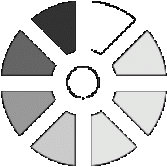Classification of Serbian Education System
The Ministry of Education of the Republic of Serbia regulates the education in Serbia. Education in Serbia starts with pre-school, followed by primary and secondary school. Students after completion of the secondary school education are eligible to attend higher education.
Snapshot of Serbia's Education System
Compulsory Education
Compulsory education in Serbia starts with pre-school of 6 months (preparatory preschool programme), followed by primary education of 8 years.
Preschool Education
Preschool education in Serbia is offered by kindergartens. The pre-school period of 6 months is mandatory. Students at the age of 5 or 6 may attend local kindergarten. The preschools in Serbia acquaint pupil with the educational environment and prepare them for primary schools.
Primary Education
Primary education in Serbia is compulsory and lasts for 8 years. Children at the age of 7 may enter primary schools. Primary schools in Serbia are divided into two grades:
Lower grades: Covering grade 1 to 4 and a single teacher teaches all the subjects.
- Curriculum: English, mother tongue, music, fine arts, mathematics, physical education, and nature and society. Serbian as a second language is also taught to students whose mother tongue is not Serbian.
- Compulsory electives: Religious education and civics
Higher grades: Covering grade 5 to 8
- Curriculum: History, biology, second foreign language, physics, geography, chemistry and technical sciences.
- Electives: Computer sciences, sculpting, drawing and painting.
Secondary Education
Students can take admission into the secondary schools in Serbia right after finishing primary education. Secondary education in Serbia is not mandatory to attend, and is imparted by the following types of secondary schools:
Grammar schools, or Gymnasium (gimnazija): These schools provide general and broad studies.
- Duration: 4 years
- Curriculum: Social sciences, natural sciences, languages and mathematics.
These schools are of two types: general and professional/specialised schools.
- General high schools: These schools provide general education and lasts for 4 years.
- Professional high schools (struna skola): These schools provide education in a particular field. Students specialise in a specific field at professional schools.These schools lasts for 4 years.
Vocational high schools (zanatska skola): These schools provide education for a particular vocation. The secondary vocational schools provide theoretical as well as practical knowledge and skills and prepare students for work or further education.
For detailed information on the K-12 education system in Serbia, click here. Higher Education
Academic studies: Comprises of-
- Basic academic studies: The basic academic study lasts for 3 to 4 years, with 180 to 240 ECTS credits. These studies lead to a title of bachelor degree.
- Master studies: These lasts for 1 to 2 years, with 60 to 120 ECTS credits depending on the duration of the study programme.
- Doctoral studies (PhD): The doctorate studies lasts for at least 3 years, with 180 ECTS points.
Applied studies: Comprises of-
- Basic applied studies: The basic applied studies last for 3 years with 180 ECTS credits.
- Specialized applied studies: The specialised studies last for 1 year with 60 ECTS.
Higher Education Institutions
Higher education in Serbia is imparted by the following
higher education institutions: universities, colleges of academic studies and colleges of applied sciences. There are faculties and academy of arts which are members of the universities in Serbia. Universities in Serbia conduct educational, art, scientific and technical work. Colleges in Serbia provide basic and specialist study programmes.
For latest updates and subject combinations offered at various levels see official website of Serbian Ministry of Education https://prosveta.gov.rs/
 Processing...
Processing...
 Processing...
Processing...